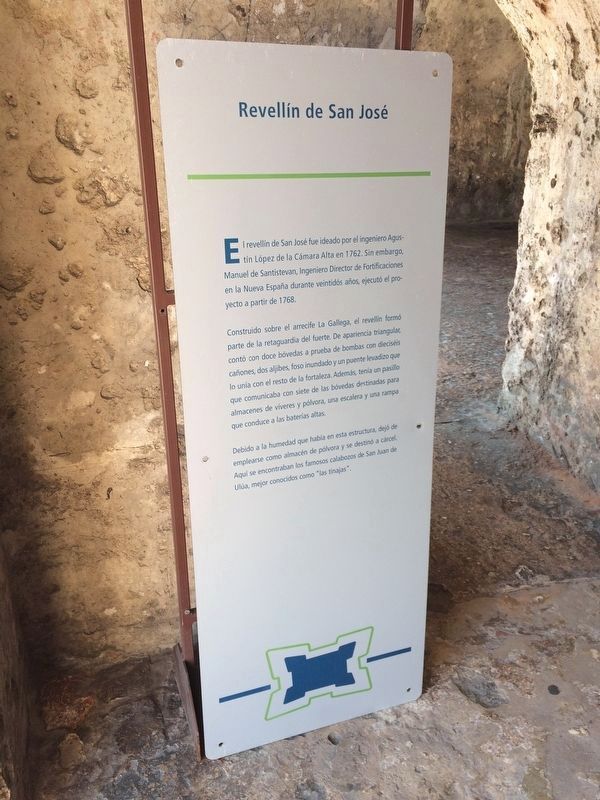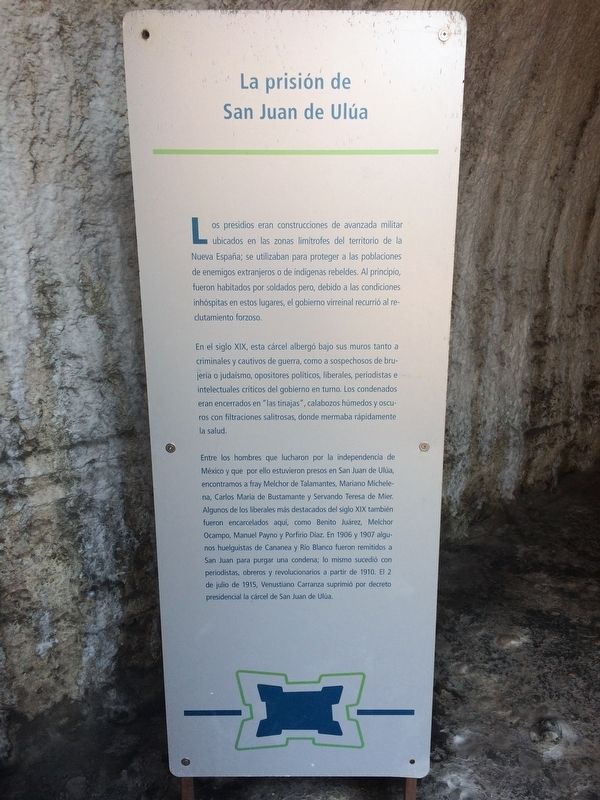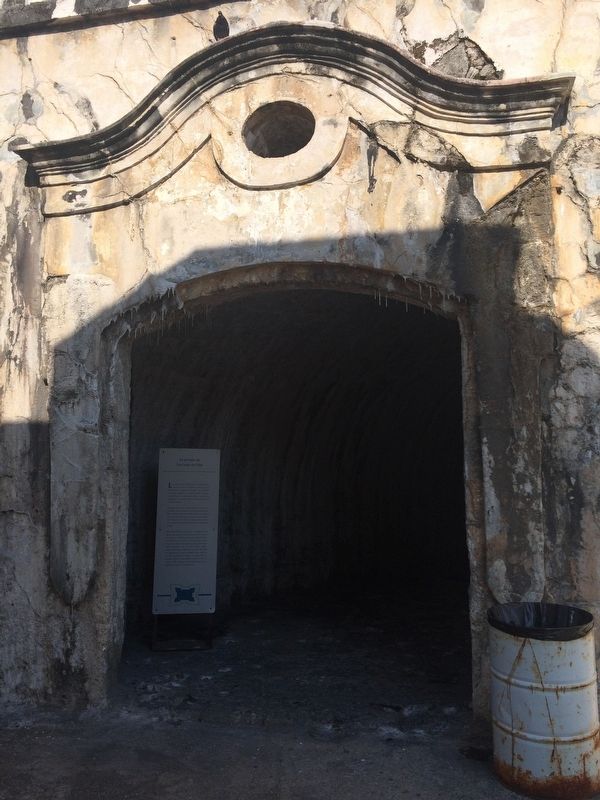Veracruz, Mexico — The Gulf Coast (North America)
The Prison of San Juan de Ulúa
En el siglo XIX, esta cárcel albergó bajo sus muros tanto a criminales y cautivos de guerra, como a sospechosos de brujería o judaísmo, opositores políticos, liberales, periodistas e intelectuales críticos del gobierno en turno. Los condenados eran encerrados en "las tinajas", calabozos húmedos y oscuros con filtraciones salitrosas, donde mermaba rápidamente la salud.
Entre los hombres que lucharon por la independencia de México y que por ello estuvieron presos en San Juan de Ulúa encontramos a fray Melchor de Talamantes, Mariano Michelena, Carlos María de Bustamante y Servando Teresa de Mier. Algunos de los liberales más destacados del siglo XIX también fueron encarcelados aquí, como Benito Juárez, Melchor Ocampo, Manuel Payno y Porfirio Díaz. En 1906 y 1907 algunos huelguistas de Cananea y Río Blanco fueron remitidos a San Juan para purgar una condena; lo mismo sucedió con periodistas, obreros y revolucionarios a partir de 1910. El 2 de julio de 1915, Venustiano Carranza suprimió por decreto presidencial la cárcel de San Juan de Ulúa.
English translation:
In the 19th century, this prison housed under its walls criminals, prisoners of war, those suspected of witchcraft or Judaism, political opponents, liberals, journalists and intellectuals critical of the current government. The convicts were locked up in "las tinajas", dark and damp dungeons with leaks of salty water, where it was difficult for the prisoners to maintain their health.
Among the men who fought for the independence of Mexico and who were imprisoned in San Juan de Ulúa were Friar Melchor de Talamantes, Mariano Michelena, Carlos Maria de Bustamante and Servando Teresa de Mier. Some of the most prominent liberals of the nineteenth century were also imprisoned here, such as Benito Juárez, Melchor Ocampo, Manuel Payno and Porfirio Díaz. In 1906 and 1907 some labor protesters from Cananea and Río Blanco were imprisoned in San Juan. This also happened with journalists, workers and revolutionaries from 1910. On July 2, 1915, Venustiano Carranza, by presidential decree, closed the jail at San Juan de Ulúa.
Topics. This historical marker is listed in these topic lists: Forts and Castles • Labor Unions • Law Enforcement • Patriots & Patriotism. A significant historical date for this entry is July 2, 1915.
Location. 19° 12.601′ N, 96° 7.85′ W. Marker is in Veracruz. The marker is just inside one of the vaulted rooms previously used as a jail cell at San Juan de Ulúa. Touch for map. Marker is in this post office area: Veracruz 91700, Mexico. Touch for directions.
Other nearby markers. At least 8 other markers are within walking distance of this marker. Benito Juárez in Prison in San Juan de Ulúa (a few steps from this marker); General Miguel Barragán (within shouting distance of this marker); The Governor's House (within shouting distance of this marker); The “Curtain” of San Fernando (about 120 meters away, measured in a direct line); Fort San Juan de Ulúa (about 120 meters away); Patio of the Curtain or Dry Moat (about 120 meters away); The Last Stronghold of the Spanish in Mexico (about 120 meters away); The Bastion of San Crispin (about 150 meters away). Touch for a list and map of all markers in Veracruz.

Photographed By J. Makali Bruton, March 23, 2017
4. An additional nearby marker on the Revelin of San José
El revellín de San José fue ideado por el ingeniero Agustín López de la Cámara Alta en 1762. Sin embargo, Manuel de Santistevan, Ingeniero Director de Fortificaciones en la Nueva España durante veintidós años, ejecutó el proyecto a partir de 1768.
Construido sobre el arrecife La Gallega, el revellín formó parte de la retaguardia del fuerte. De apariencia triangular, contó con doce bóvedas a prueba de bombas con dieciséis cañones, dos aljibes, foso inundado y un puente levadizo que lo unía con el resto de la fortaleza. Además, tenía un pasillo que comunicaba con siete de las bóvedas destinadas para almacenes de víveres y pólvora, una escalera y una rampa que conduce a las baterías altas.
Debido a la humedad que había en esta estructura, dejó de emplearse como almacén de pólvora y se destinó a cárcel. Aquí se encontraban los famosos calabozos de San Juan de Ulúa, mejor conocidos como "las tinajas”.
The Revelin was built on a reef originally known as La Gallega. It was formed as part of the rear of the fort. Triangular in appearance, it had twelve bomb-proof vaults with sixteen guns, two wells, a moat that could be flooded and a drawbridge linking it with the rest of the fort. In addition, it had a corridor that communicated with seven of the vaults that were destined for the storage of provisions and gunpowder, a staircase and a ramp leading to the artillery batteries.
Due to the humidity in this structure, it stopped being used as a storage area for gunpowder and was turned into a jail. Here were the famous dungeons of San Juan de Ulúa, better known as "las tinajas", or “the water jugs”, because of their humidity.
Credits. This page was last revised on January 4, 2023. It was originally submitted on June 11, 2017, by J. Makali Bruton of Accra, Ghana. This page has been viewed 315 times since then and 50 times this year. Photos: 1, 2, 3, 4, 5. submitted on June 11, 2017, by J. Makali Bruton of Accra, Ghana.



